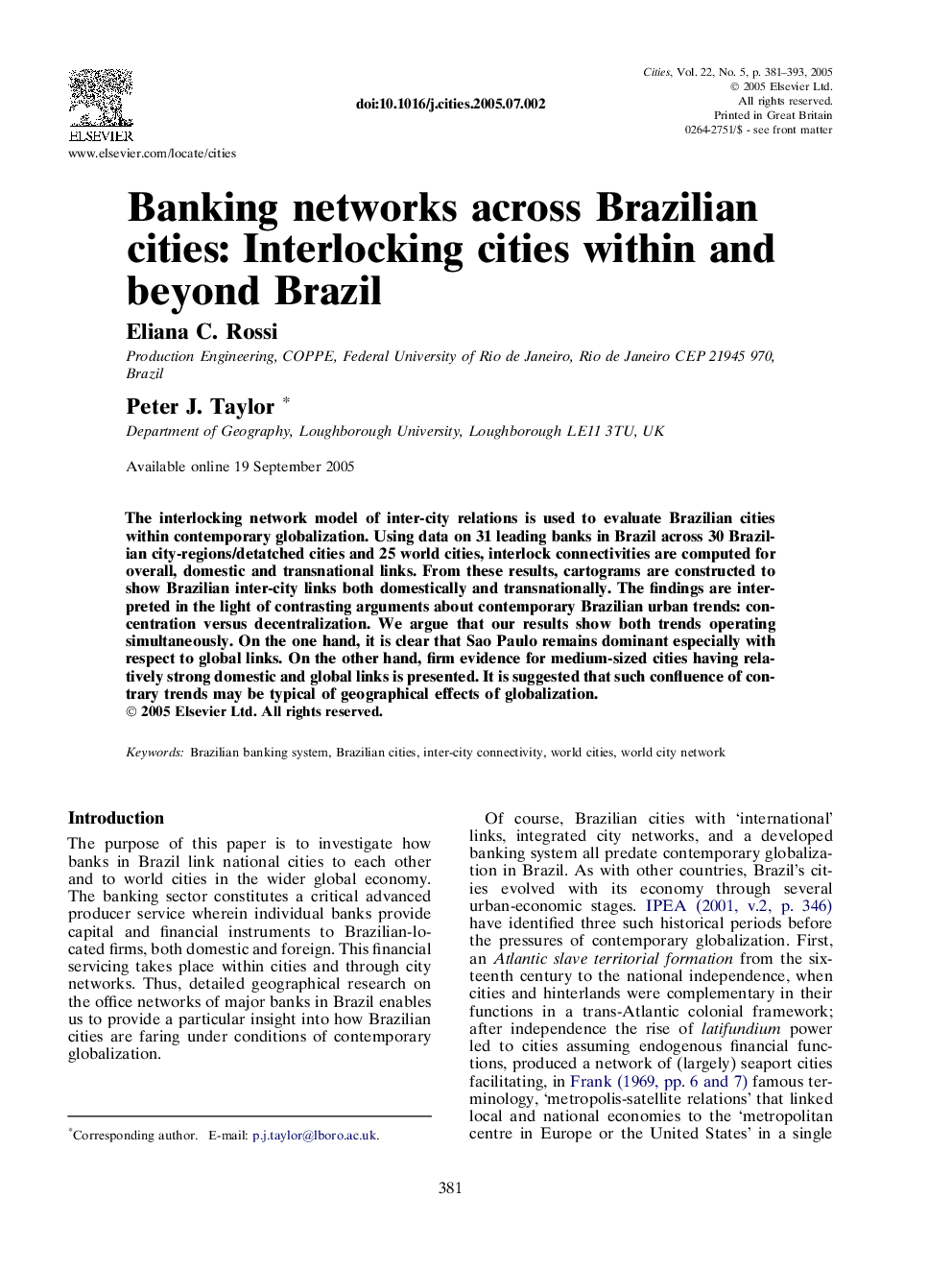| Article ID | Journal | Published Year | Pages | File Type |
|---|---|---|---|---|
| 10489916 | Cities | 2005 | 13 Pages |
Abstract
The interlocking network model of inter-city relations is used to evaluate Brazilian cities within contemporary globalization. Using data on 31 leading banks in Brazil across 30 Brazilian city-regions/detatched cities and 25 world cities, interlock connectivities are computed for overall, domestic and transnational links. From these results, cartograms are constructed to show Brazilian inter-city links both domestically and transnationally. The findings are interpreted in the light of contrasting arguments about contemporary Brazilian urban trends: concentration versus decentralization. We argue that our results show both trends operating simultaneously. On the one hand, it is clear that Sao Paulo remains dominant especially with respect to global links. On the other hand, firm evidence for medium-sized cities having relatively strong domestic and global links is presented. It is suggested that such confluence of contrary trends may be typical of geographical effects of globalization.
Keywords
Related Topics
Social Sciences and Humanities
Business, Management and Accounting
Tourism, Leisure and Hospitality Management
Authors
Eliana C. Rossi, Peter J. Taylor,
